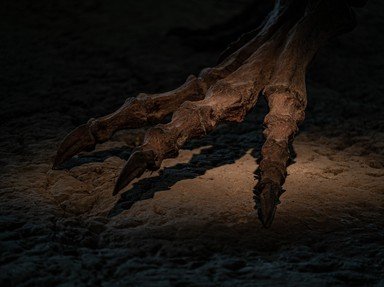Quiz Answer Key and Fun Facts
1. We are going to start our trip at one of the lesser known Scottish lakes. We are hoping that we will get to see Seilag. This mysterious aquatic beast lives in which Scottish lake?
2. Next, we are hopping on a plane and going to Lake Simcoe in Canada. About 60 miles north of Toronto, this beautiful lake is home to an aquatic cryptid that the locals have named Igopogo. What Canadian province are we in?
3. Our next destination will be the Pacific Northwest area of the United States. We are going to search this tree-laden paradise for a bipedal ape-like creature known through-out the world as Bigfoot. He has many other names. Which of the following is another nickname for this famous cryptid?
4. Now, let's go to a warmer climate! We're hopping on a plane and flying to the beautiful island of Puerto Rico. We are hoping to see the infamous cryptid that the locals call Chupacabra. He has a reputation of attacking livestock and then drinking their blood. What is the meaning of the name Chupacabra?
5. While we are enjoying the heat, let's go to the Amazon Basin. We are going to look for a lesser known cryptid. While we are here, we will be searching for a creature that the locals have named Sucuri Gigante. It is said to have complete control over certain areas in the Amazon River and can make a meal out of any native species. What type of animal does this cryptid resemble?
6. Next, we are going to fly across the Pacific and go to Cambodia. We will be searching for a bovine-type animal that is said to live in the heavily wooded areas. Its name is Kting Voar, which translates into "snake-eating cow". What would be the greatest threat to any animal that lives in the forests of this Asian country?
7. Let's take a cruise now to the Indonesian island of Flores. We are hoping to get to see a local cryptid described as a small humanoid. This humanoid is said to take food and even small children from local camps. What are we hoping to see?
8. We are now going to Tasmania. We are going to try and gather proof that an animal last seen alive in 1936 may still exist in the wild. Photographs of this marsupial show an animal that looks like a canine with stripes on the back only. What animal are we hoping to discover is still alive?
9. In 1938, a strange fish was discovered off the continent of Africa. The coelecanth had been presumed extinct for many thousands of years, and was only known from fossil records. What is the name of the island group that is closely associated with this unusual cryptid?
10. The last stop on our trip will be in the heart of Africa. Here we will be looking for a mysterious beast that is best described as a giant bat. Do you know the name of this cryptid?
Source: Author
dcpddc478
This quiz was reviewed by FunTrivia editor
Pagiedamon before going online.
Any errors found in FunTrivia content are routinely corrected through our feedback system.

